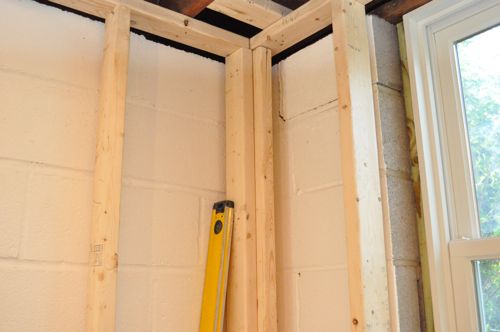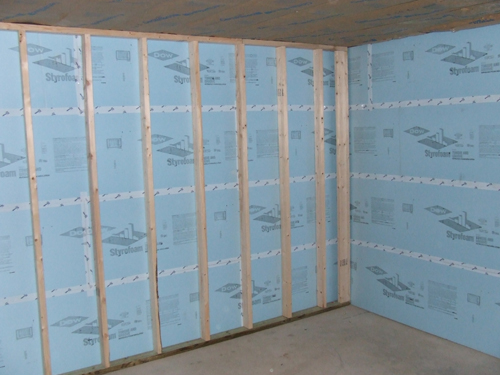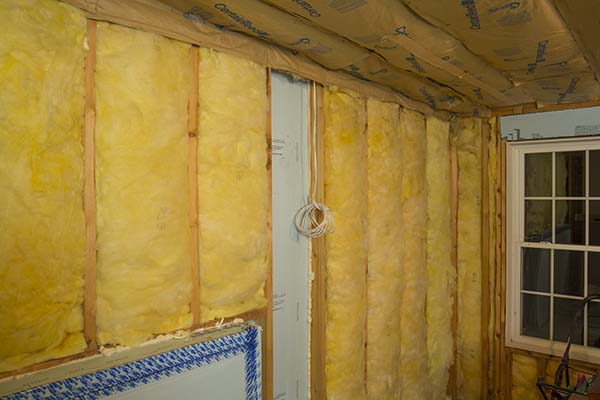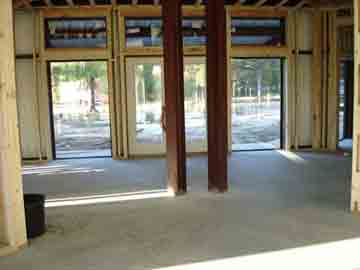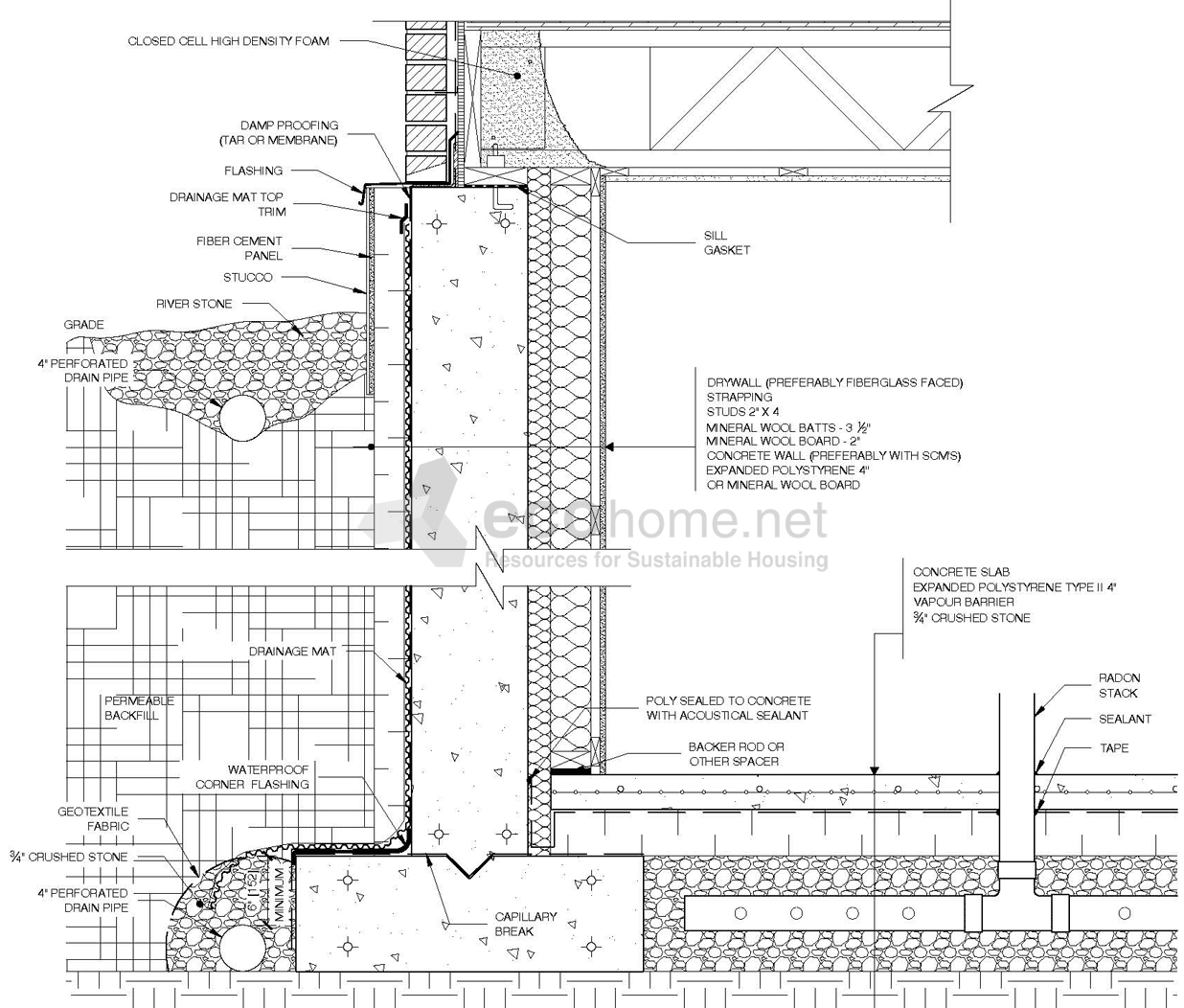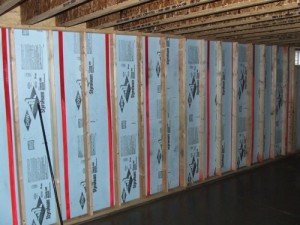Framing A Basement Wall Against Concrete Water Infiltration

Framing basement walls and ceilings is the core of any basement finishing project.
Framing a basement wall against concrete water infiltration. Framing basement walls inside corners should start with turning the last board on the first wall sideways and overlapping both about halfway past the connecting wall. If it is a drainage system it should be allowed to drain at its base. A mold expert told me to put the board on top of the framing not directly onto the concrete wall so the house can breath. The concrete foundation wall is placed against the blind side.
Use good lumber for the studs. The foundation wall of a building may be a cast in place concrete retaining or basement wall or a structural wall complete with. Check the basement walls for evidence of moisture leaks standing water or mold and mildew growth before framing the walls. I read in one of your articles when putting up rigid fome to install two inches of rigid insulation board directly against concrete.
That is if the studs are going to touch the concrete wall. The new drywall will conform to the framing so it must be plumb level and straight. 6 2020 11 52 a m. 3 2019 6 09 p m.
You can either nail the top and bottom plates then nail the studs in between or build each section on the floor and then raise and nail it into place. Concrete is porous so any moisture in the ground outside. Water should not be allowed to enter an assembly at its top or sides. If two or more types of wall systems adjoin control of water infiltration and or drainage must be integrated or handled independently.
You definitely don t want to use old or bowed studs that will deform your walls. Or you can leave a 4 inch gap between the studs and concrete wall and probably get away with it. Building a wall in place. Learn how to insulate and frame the walls and ceilings build soffits frame partition walls and frame around obstructions.
Introduction turn your unfinished basement into beautiful functional living space. How to frame a basement 1. Most jurisdictions require a 4 mil plastic sheet vapor barrier for basement walls against concrete. Existing pipes that run along the inside of concrete basement walls a common issue often create another problem.
Are available in smooth or corrugated configurations and are slotted on the bottom half of their cross section to allow water infiltration. There are two ways to frame a wall. This can be solved by simply leaving the pipe in place and building the new wall. This way you can fasten the two walls together and still have a surface for attaching your drywall.

